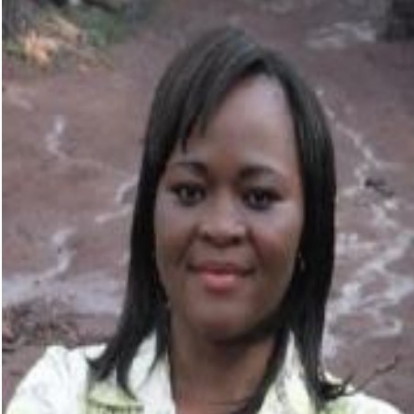International Journal of Image, Graphics and Signal Processing (IJIGSP)
IJIGSP Vol. 10, No. 11, 8 Nov. 2018
Cover page and Table of Contents: PDF (size: 1954KB)
A Machine Learning Algorithm for Biomedical Images Compression Using Orthogonal Transforms
Full Text (PDF, 1954KB), PP.38-53
Views: 0 Downloads: 0
Author(s)
Index Terms
Biomedical Color Image, Machine Learning, Vector Quantization, Discrete Walsh Transform, Discrete Chebyshev Transform
Abstract
Compression methods are increasingly used for medical images for efficient transmission and reduction of storage space. In this work, we proposed a compression scheme for colored biomedical image based on vector quantization and orthogonal transforms. The vector quantization relies on machine learning algorithm (K-Means and Splitting Method). Discrete Walsh Transform (DWaT) and Discrete Chebyshev Transform (DChT) are two orthogonal transforms considered. In a first step, the image is decomposed into sub-blocks, on each sub-block we applied the orthogonal transforms. Machine learning algorithm is used to calculate the centers of clusters and generates the codebook that is used for vector quantization on the transformed image. Huffman encoding is applied to the index resulting from the vector quantization. Parameters Such as Mean Square Error (MSE), Mean Average Error (MAE), PSNR (Peak Signal to Noise Ratio), compression ratio, compression and decompression time are analyzed. We observed that the proposed method achieves excellent performance in image quality with a reduction in storage space. Using the proposed method, we obtained a compression ratio greater than 99.50 percent. For some codebook size, we obtained a MSE and MAE equal to zero. A comparison between DWaT, DChT method and existing literature method is performed. The proposed method is really appropriate for biomedical images which cannot tolerate distortions of the reconstructed image because the slightest information on the image is important for diagnosis.
Cite This Paper
Aurelle Tchagna Kouanou, Daniel Tchiotsop, René Tchinda, Christian Tchito Tchapga, Adelaide Nicole Kengnou Telem, Romanic Kengne, "A Machine Learning Algorithm for Biomedical Images Compression Using Orthogonal Transforms", International Journal of Image, Graphics and Signal Processing(IJIGSP), Vol.10, No.11, pp. 38-53, 2018. DOI: 10.5815/ijigsp.2018.11.05
Reference
[1]Bruylants T, Munteanu A, Schelkens P, “Wavelet Based Volumetric Medical Image Compression”, Elsevier Signal Processing: Image Communication. Vol.31, pp. 112–133, 2015.
[2]Sayood K, Introduction to Data Compression, third ed., Morgan Kaufmann, San Francisco, 2006.
[3]S. K. Singh and S. Kumar, “Mathematical Transforms and Image Compression: A review”, Maejo. Int. J. Sci. Technol pp. 235-249, 2010.
[4]Salomon David, A Concise Introduction to data compression, Springer-Verlag, London, 2008.
[5]Farelle P, Recursive Block Coding for Image data compression, Springer-Verlag, New York, 1990.
[6]S. Lee, “Compression image reproduction based on block decomposition”, IET Image Processing. Vol.3, No.5, pp. 188-199, 2009.
[7]R. Starosolski, “New simple and efficient color space transformations for lossless image Compression”, Elsevier J. Vis. Commun. Image R. Vol.25 pp. 1056-1063, 2014.
[8]Dayanand G. Savakar and Shivanand Pujar ," Digital Image Watermarking Using DWT and FWHT ", International Journal of Image, Graphics and Signal Processing(IJIGSP), Vol.10, No.6, pp. 50-67, 2018. DOI: 10.5815/ijigsp.2018.06.06
[9]Taubman David, Marcellin M, JPEG2000 Image Compression fundamentals, Standards and Practice, Kluwer Academic Publishers, Boston, 2002.
[10]R. Mukundan, “Transform Coding Using Discrete Tchebichef Polynomials”, Proceedings IASTED International Conference on Visualization Imaging and Image Processing, pp. 270-275, 2006.
[11]Azman Abu and Sahib S, “Spectral Test via Discrete Tchebichef Transform for Randomness”, International Journal of Cryptology Research, Vol. 3, pp.1-14, 2011.
[12]Prattipati S, Swamy M, Meher P, “A Comparison of Integer Cosine and Tchebychev Transforms for Image Compression Using Variable Quantization”, Journal of Signal and Information Processing, Vol. 6, pp. 203-216, 2015.
[13]Senapati R, Pati U, Mahapatra K, “Reduced memory, low complexity embedded image compression algorithm using hierarchical listless discrete Tchebichef transform”, IET Image Processing, Vol. 8, No.4, pp. 213-238, 2014.
[14]Pan Z, Kotani K and Ohmi T, “Fast Encoding Method for Image Vector Quantization by Using Partial Sum Concept in Walsh Domain”, IEEE Signal Processing Conference, 4p, 2005.
[15]Lu T, Chang C, A Survey of VQ Codebook Generation, Journal of Information Hiding and Multimedia Signal Processing, Vol.1, pp. 190-203, 2010.
[16]GERSHO A, “On the Structure of Vector Quantizers”, IEEE Trans. on Inform. Theory, Vol. 28, 1982.
[17]GRAY M, “Vector Quantization”, IEEE ASSP Magazine, pp. 4-29, 1984.
[18]Panchanathan S, Goldberg M, “Adaptive Algorithms for Image Coding Using Vector Quantization”, Elsevier Signal Processing: Image Communication, Vol. 4, pp. 81-92, 1991.
[19]Kekre H, Natu P and Sarode T, “Color Image Compression using Vector Quantization and Hybrid Wavelet Transform”, Elsevier Procedia Computer Science, Vol. 89, pp. 778-784, 2016.
[20]Zhong S, Chin F, Yun Shi Q, “Adaptive hierarchical vector quantization for image coding: new results”, Optical Engineering, Vol.34, pp. 2912-2917, 1995.
[21]Chuang J, Hu Y, “An adaptive image authentication scheme for vector quantization compressed image”, Elsevier J. Vis. Commun. Image R, Vol. 22, pp. 440-449, 2011.
[22]Comaniciu D, Grisel R, “Image Coding Using Transform Vector Quantization with Training Set Synthesis”, Elsevier Signal Processing, Vol. 89, pp. 1649–1663, 2002.
[23]Setiawan A, Suksmono A and Mengko T, “Color Medical Image Vector Quantization Coding Using K-Means: Retinal Image”, Springer IFMBE Proceedings, Vol. 23, pp. 911–914, 2009.
[24]Choudhry M and Kapoor R, “Performance Analysis of Fuzzy C-Means Clustering Methods for MRI Image Segmentation”, Elsevier Procedia Computer Science, Vol. 89, pp. 749-758, 2016.
[25]Morales-Mendoza L, Gamboa-Rosales H, Shmaliy Y, “A new class of discrete orthogonal polynomials for blind fitting of finite data”, Elsevier Signal Processing, Vol. 93, 1785-1793, 2013.
[26]Shakibaei Asli B, Paramesran E, Lim C, “The fast recursive computation of Tchebichef moment ant its inverse transform based on Z-transform”, Elsevier Digital Signal Processing, Vol.23, No.5, pp.1738-1746, 2013.
[27]Nakagaki K and Mukundan R, “A Fast 4x4 Forward Discrete Tchebichef Transform Algorithm”, IEEE Signal Processing Letters Vol. 14, No.10, pp. 684-687, 2007.
[28]Ernawan F and Azman Abu N, “Efficient Discrete Tchebichef on Spectrum Analysis of Speech Recognition”, International Journal of Machine Learning and Computing, Vol.1, pp. 1-6, 2011.
[29]Xiao B, Lu G, Zhang Y, Li W, Wang G, “Lossless image compression based on integer Discrete Tchebichef Transform”, Elsevier Neurocomputing, Vol. 214, pp. 587-593, 2016.
[30]Gegum A, Manimegali D, Abudhahir A, Baskar S, “Evolutionary optimized discrete Tchebichef moments for image compression applications, Turk J Elec Eng & Comp Sci, Vol.24“ pp. 3321-3334, 2016. doi:10.3906/elk-1403-318.
[31]Abu N, Wong S, Rahmalan H, Sahib S, “Fast and Efficient 4x4 Tchebichef Moment Image Compression”, Majlesi Journal of Electrical Engineering, Vol.4, pp. 1-9, 2010.
[32]Chirikjian G and Kyatkin A0233ngineering Applications of Noncommutative Harmonic Analysis: With Emphasis on Rotation and Motion Groups, CRC Press LLC, Boca Raton, Florida, 2000. ISBN: 0-8493-0748-1
[33]Aloui N, Bousselmi S, Cherif A., “Speech Compression Based on Discrete Walsh Hadamard Transform”, Int.J. Information Engineering and Electronic Business, Vol.3, pp. 59-65, 2013.
[34]Karagodin M, Polytech T, Russia U, Osokin A, “Image Compression by Means of Walsh Transform”, IEEE Modern Technique and Technologies, pp. 173–175, 2002.
[35]Linde Y, Buzo A, Gray M, “An Algorithm for Vector Quantizer Design”, IEEE Transactions on Communications, Vol. 28, No. 1, pp. 84- 95, 1980.
[36]Le Bail and Mitiche A, “Vector Quantization of Images Using Kohonen Neural Network”, Elsevier Signal Processing, Vol. 6, pp. 529-539, 1989.
[37]Huang B, Wang Y and Chen J, “ECG Compression Using the Context Modeling Arithmetic Coding with Dynamic Learning Vector–Scalar Quantization”, Elsevier Biomedical Signal Processing and Control, Vol. 8, No. 1, pp. 59–65, 2013.
[38]Wang X and Meng J, “A 2-D ECG Compression Algorithm Based on Wavelet Transform and Vector Quantization”, Elsevier Digital Signal Processing, Vol.18, No.2, pp. 179-188, 2008.
[39]Cosman P, Tseng C, Gray M, Olshen R, et al., “Tree-Structured Vector Quantization of CT Chest Scans: Image Quality and Diangnostic Accuracy”, IEEE Tansactions on Medical Image, Vol.12, No. 4, pp. 727-739, 1993.
[40]De A and Guo, “An adaptive vector quantization approach for image segmentation based on SOM network”, Elsevier Neurocomputing, Vol. 149, pp. 48–58, 2015.
[41]Laskaris N, Fotopoulos S, “A novel training scheme for neural-network based vector quantizers and its application in image compression”, Elsevier Neurocomputing Vol. 61, pp. 421–427, 2004.
[42]Nagaradjane P, Swaminathan S, Krishnan S, “Performance of space-division multiple-access system using preprocessing based on feedback of vector-quantized channel spatial information”, Elsevier Computers and Electrical Engineering, Vol.40, pp. 1316–1326, 2014. http://dx.doi.org/10.1016/j.compeleceng.2014.01.002.
[43]Cosman P, Gray R and Vetterli M, “Vector Quantization of Image Subbands: A Survey”, IEEE Tansactions on Image Processiong, Vol.5, No.3, pp. 202-224, 1996.
[44]Choudhry M and Kapoor R, “Performance Analysis of Fuzzy C-Means Clustering Methods for MRI Image Segmentation”, Elsevier Procedia Computer Science, Vol. 89, pp. 749-758, 2016.
[45]Naldi M, Campello R, “Comparison of distributed evolutionary k-means clustering algorithms”, Elsevier Neurocomputing, Vol. 163, pp. 78–93, 2015.
[46]Dhanachandra N, Manglem K and Jina Chanu Y, “Image Segmentation using K-means Clustering Algorithm and Subtractive Clustering Algorithm”, Elsevier Procedia Computer Science, Vol.54, pp. 764 – 771, 2015.
[47]Cuomo S, De Angelis V, Farina G, Marcellino L, Toraldo G, “A GPU-accelerated parallel K-means algorithm”, Elsevier Computers and Electrical Engineering, pp.1–13., 2017, https://doi.org/10.1016/j.compeleceng.2017.12.002
[48]Lakhdar A, Khelifi M, Beladgham M, Aissa M, Bassou A, “Image Vector Quantization Codec Indexes Filtering”, Serbian Journal of Electrical Engineering, Vol.9, 263-277, 2012.
[49]Antonini M, Barlaud M, Mathieu P, Optimal “Codebook and New Strategy of Image vector Quantization”, Twelfth colloquium Gretsi, Juan les Pins, 4p, 1989.
[50]Franti P, Kaukoranta T, Nevalainen O, “On the Splitting Method for VQ Codebook Generation”, Optical Engineering, Vol. 36 , No.11, pp. 3043-3051, 1997.
[51]Huffman David, “A Method for the Construction of Minimum-Redundancy Codes”, Proceeding of the I.R.E, Vol.40, pp. 1098-1101, 1952.
[52]Sohag Kabir,"A Compressed Representation of Mid-Crack Code with Huffman Code", I.J. Image, Graphics and Signal Processing (IJIGSP), vol.7, no.10, pp.11-18, 2015.DOI: 10.5815/ijigsp.2015.10.02
[53]Berman P, Karpinski M, Nekrich Y, “Approximating Huffman Codes in Parallel”, Elsevier Journal of Discrete Algorithms, Vol.5, No.3, pp. 479-490, 2007.
[54]Tomasz Biskup M and Plandowski W, “Shortest Synchronizing Strings for Huffman Codes”, Elsevier Theoretical Computer Science, Vol.410, No. 30-40, pp. 3925-3941, 2009.
[55]S. Shunmugan, P. Arockia Jansi Rani, "Secured Lossy Color Image Compression Using Permutation and Predictions", International Journal of Image, Graphics and Signal Processing (IJIGSP), Vol.9, No.6, pp.29-36, 2017.DOI: 10.5815/ijigsp.2017.06.04
[56]Ananthi V, Balasubramaniam P, “A new image denoising method using interval-valued intuitionistic fuzzy sets for the removal of impulse noise”, Elsevier Signal Processing, Vol.121 pp. 81-93, 2015.
[57]http://www.atlas-imagerie.fr/, (accessed 10.04.17).
[58]‘US National Library of Medicine’, https://www.nlm.nih.gov/, (accessed 12.04.17).
[59]Ayoobkhan M, Chikkannan E and Ramakrishnan K, “Lossy image compression based on prediction error and vector quantisation”, Springer EURASIP Journal on Image and Video Processing, Vol. 35, pp. 1-13, 2017





